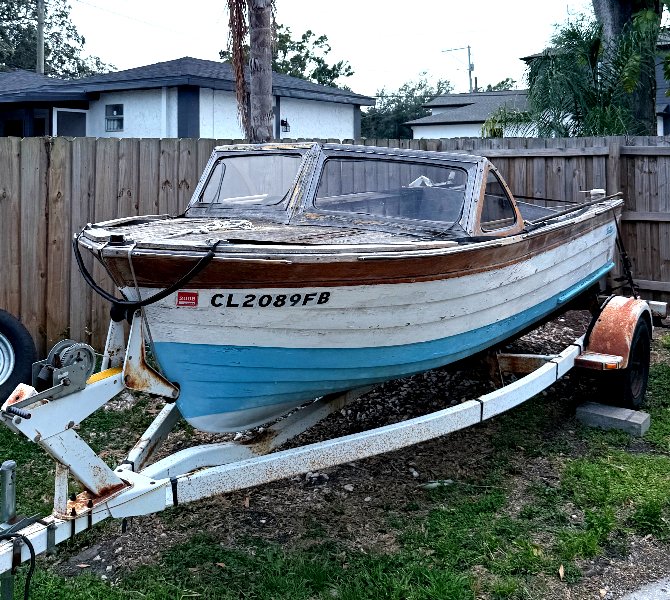- Home
- Your Boats
- Net Boat
"Salty" a Harkers Island Net
Boat
Part 3.
The continuing story of my Harkers Island Net Boat restoration.
by Alan DeForest
(Wilmington, NC, USA)
Net Boat, May 2013, Stem Repair and Planking
I have all the frames in and for the most part they are faired and ready for planking.Now, I have tackled the lower stem and forward keel section.
In the last blog I removed the rotted sections of the forward keel and replaced it with a solid piece that is epoxied and bolted in place; the process will be repeated with the stem and knee.
Here’s
the stem starting off.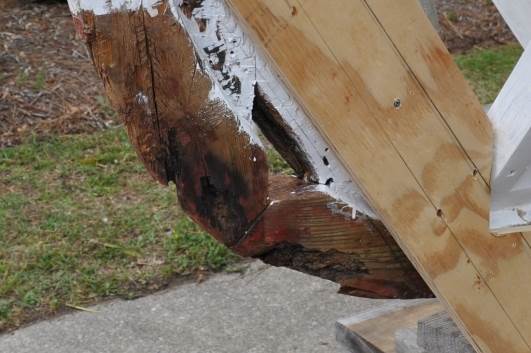 There
is plenty of rot and missing wood.
There
is plenty of rot and missing wood.
The traingular section missing waspart of the knee.
I have set up a piece of plywood to guide the circular saw to start the stemoplasty, sort of speak.
After lopping off the the bad wood I flattened the section with a combination of power planer, right angle grinder and belt sander.
Would have been nice if I could have gotten the old bolts out.
Kept it flat and square by frequently checking with a straight edge.
I figure any deviation from
perfect will be compensated
by the epoxy.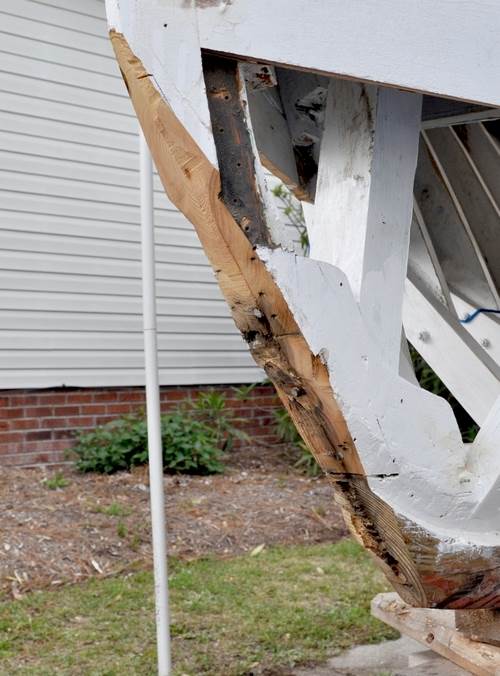
With the nose cleaned up nice and flat I affixed the blank prepared earlier.
Using
a thickened epoxy, lag bolts and clamps the
blank fit nicely and cured up for the next step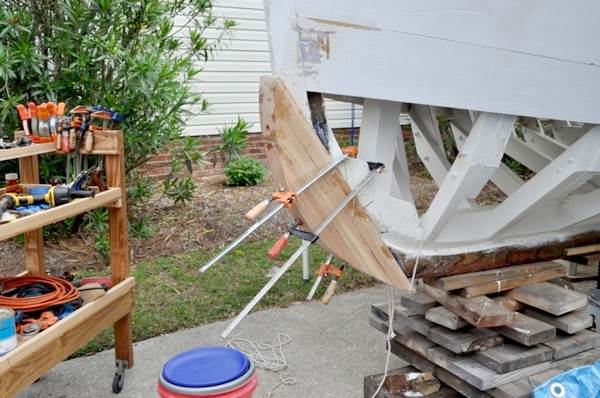 I
used screws to hold the template in place to perform the initial
shaping from the stem to the keel.
I
used screws to hold the template in place to perform the initial
shaping from the stem to the keel.
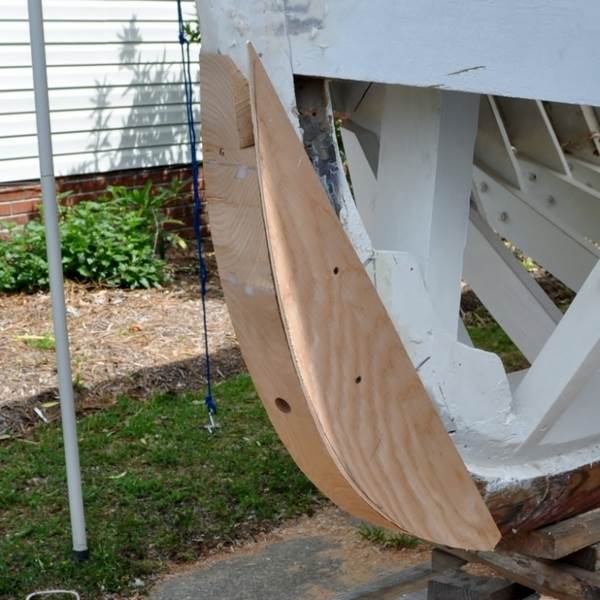
After
shaping the side profile I shaped the forward most section.
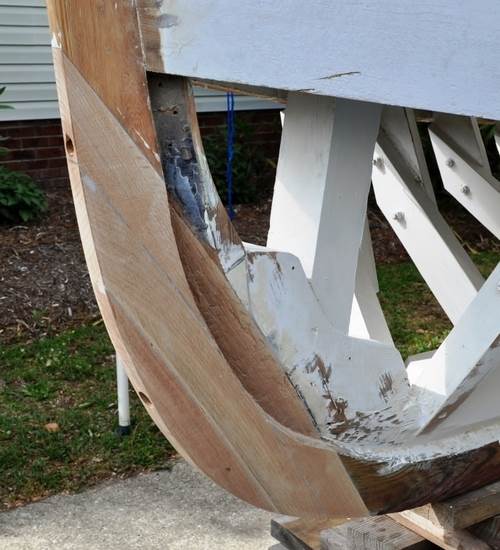 Not
shown in the photos is the template I fastened from the top of the new
section to the keel which held the shape of the forward edge of the
stem.
Not
shown in the photos is the template I fastened from the top of the new
section to the keel which held the shape of the forward edge of the
stem.Using the power planer and belt sander the front profile was shaped.
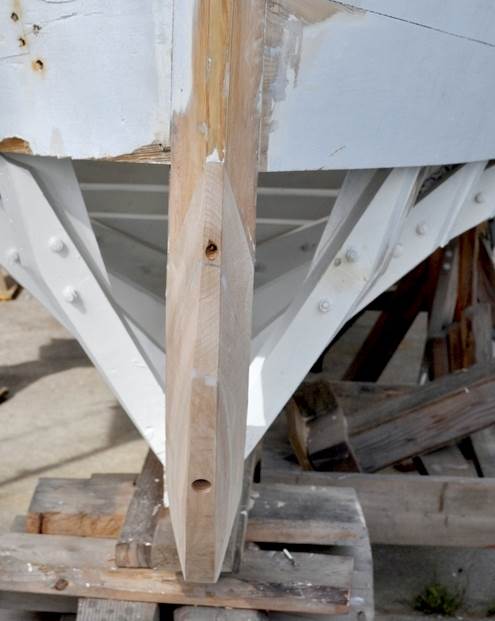 Here
it is shaped up and ready for a few more bolts to share the
loads.
Here
it is shaped up and ready for a few more bolts to share the
loads.I have collected an arsenal of power tools that make this work bearable while working full time.
There are a number of opinions about gluing up white oak, especially with epoxy.
There are the cons and pros for this but I will go with it.
I try to hedge my bet with a dovetail feature on the joints.
Before the glue up I use a dovetail cutter in a trim router and run several grooves in the mating surfaces.
During the glue up I fill all the groves with epoxy and a generous amount for the remainder of the joint.
The clamp up is just enough to get a bit of squeeze out without starving the joint.
The dovetails produce a locking action I hope will strengthen the joint.
In fifty years my grandchildren will see them when they have to restore her again.
Doesn’t look too bad, but not sure if there is a problem with tying the keel and stem tightly together; time will tell?
Coat
of paint makes everything better.
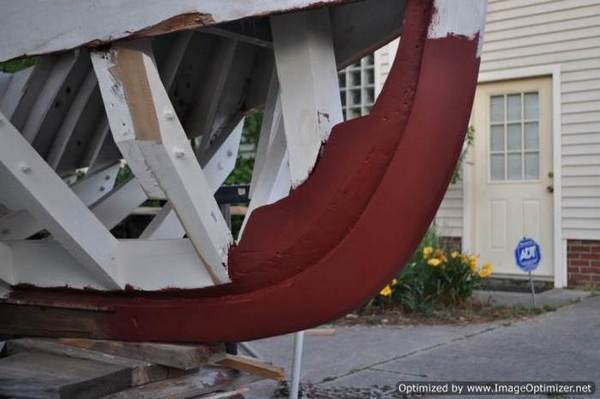
It’s been a while since the last blog so I have a lot to cover.
After removing all the bottom planks and a side strake from each side it’s time to start putting some wood back on.
Much of the fairing of the chine has been completed and now it’s time to replace the planking to the chine.
I used a ½ x ½ inch batten to fair the chine
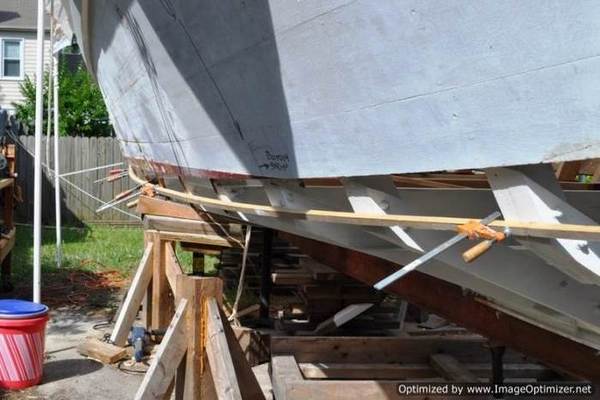 I
replaced several side frame ends and painted them up with
primer.
I
replaced several side frame ends and painted them up with
primer.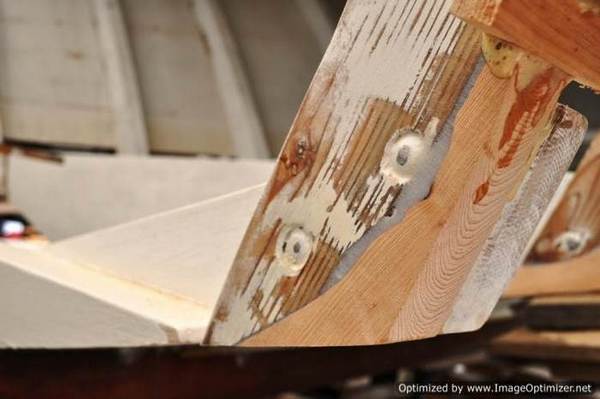
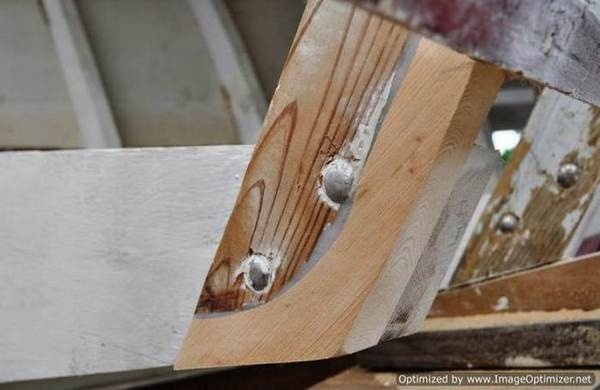
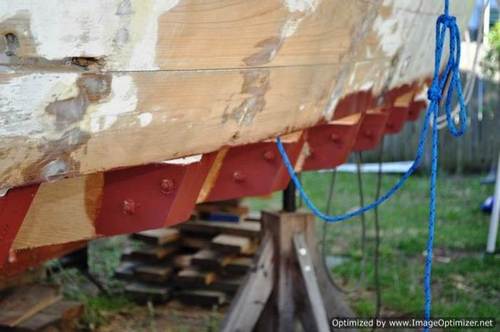
The ropes are to hold the plank in position when working alone.
Adjusted to keep the plank just shy of contacting they worked well.
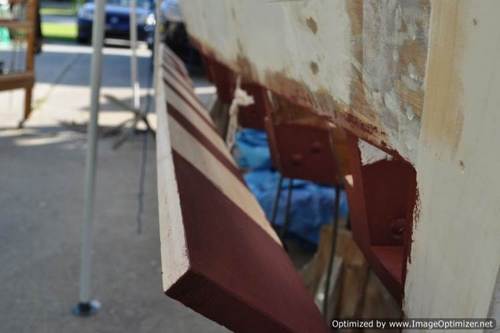
With a plank in position, caulk is beaded on the top edge and then clamped in place.
It is then screwed in place with silicon bronze screws.
I also applied bedding compound between the plank and frame.
I’m sorry I missed getting pictures of the spiling batten in place and transferring the measurements to the plank.
The process is explained in, The Boat Building Manual by Robert M. Steward, and it worked marvelously.
It was a real pleasure to see the plank sort of roll into position as it was pulled up tight.
Of course the hardest part to pull in was at the stem and it needed some interestingly shaped blocks of wood to set the clamps square.
Again I have no picture since I was as busy as a one
armed paper hanger trying to get 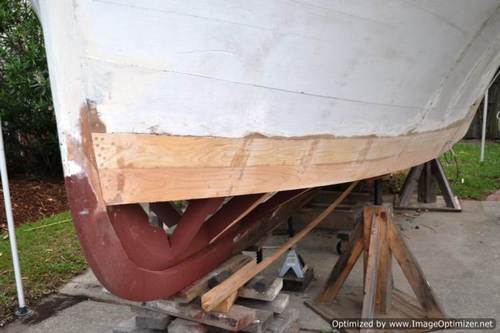 everything fastened.
everything fastened.
Here is the first plank in place.
Both sides needed two planks to run the full length.
I glued up two planks to get the width needed by the forward planks.
For a better joint I splined them together.
The forward end of starboard plank and a close up of a couple of patches to the adjacent plank that were pulled away during the teardown.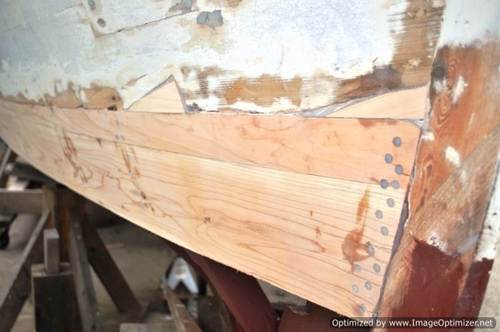 Here
is the aft end of the plank to a fashion piece that starts the fantail.
Here
is the aft end of the plank to a fashion piece that starts the fantail.
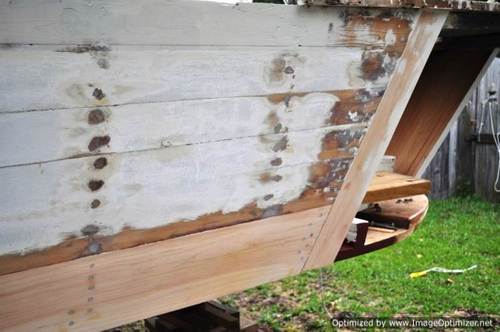
Now to make a long story longer I will follow up with the garboard installation and this time I’ll catch the spiling batten in use.
Thanks for stopping in.
Net Boat, Forward Frame Installation
 I've
made some progress with the forward frames this week and especially
this
Saturday and Sunday.
I've
made some progress with the forward frames this week and especially
this
Saturday and Sunday.
Originally the frames were sitting in a cut out section of the net boat keel and attached to a triangular gusset th
at was held to the keel with a drift.
After finding out how rotten the net boat frames had become I decided to replace the top half of the keel.
With a keel section without the large cut out sections I decided to mortise the frames into the keel.
This will help strengthen the thinnest section of keel that has seen a lot of stress over the years.
Here's a view of the frames on the starboard side.
A close up of the port side that still needs final fastening and a back rabbet cut into the new section of the keel.

After the rabbet is cut and the frames are faired and a coat of paint and .. eh, some planks and bottom paint it'll look done.
Cleaning Up the Forward Keel
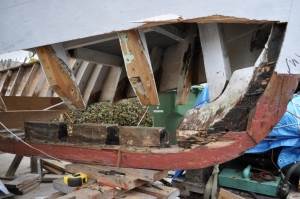
Now that the frames are out I can clean up the areas where the frames attach to the keel.
There were three drifts still in place that needed removal.
They could be cut flush but that would leave iron in the wood and I think it's best to get it out.
A look at the keel and frames where the drifts were exposed to water it appears the wood is actually charred and eroded away.
If anyone has another explanation I'm all ears.
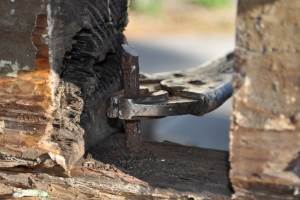
Drifts are sometimes a real chore to pull.
For this batch I found that a pair of vise grips was useful to actually rotate the drifts to loosen them up.
One was particularly tenacious and I applied a torch to heat it cherry red.
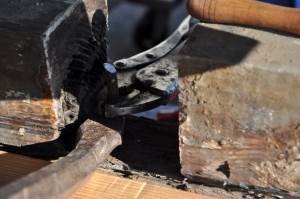
I used this technique on other drifts in the net boat keel.
To make the final extraction reapply the vise grips and pry them out with a pinch bar. Using a combination of bits of 2X6 a fulcrum point can be conveniently placed.
I think I'll be beefing up the bad spots in the keel with penetrating epoxy and some thickened and troweled in place.
Next I'll be rebuilding the frames.
Thanks for taking a look at my Harkers Island
Net Boat, suggestions and encouragement is
always accepted.
Alan
DeForest
Previous Comments
Click the "SaltyComments" link to see whatt others have said about Alan's rebuild.
Salty Comments
A great thorough rebuild on your Harkers Island Net Boat Alan !
Good work.
Following with interest.


